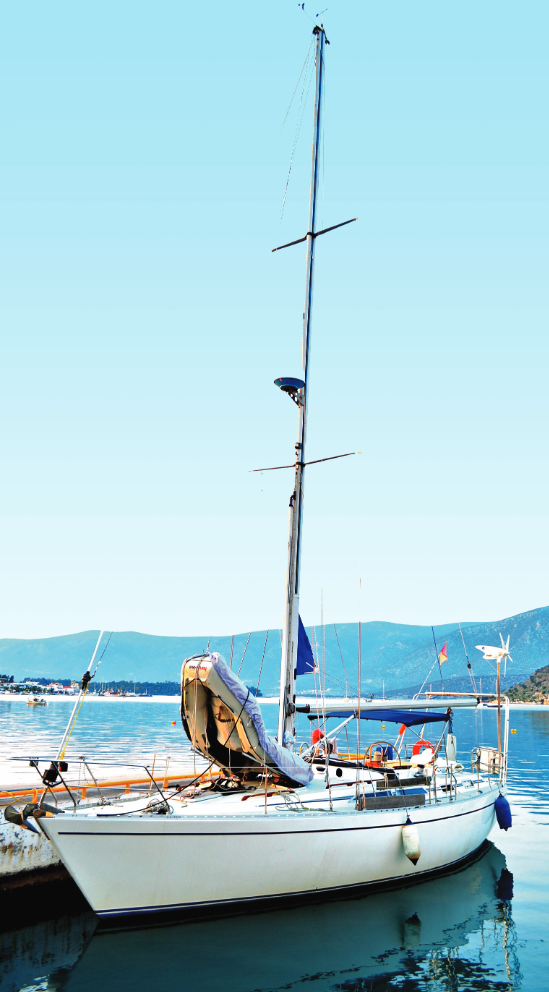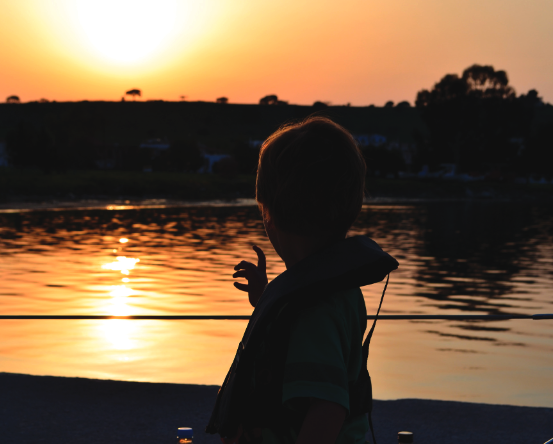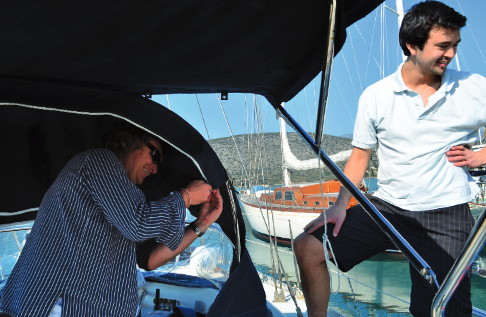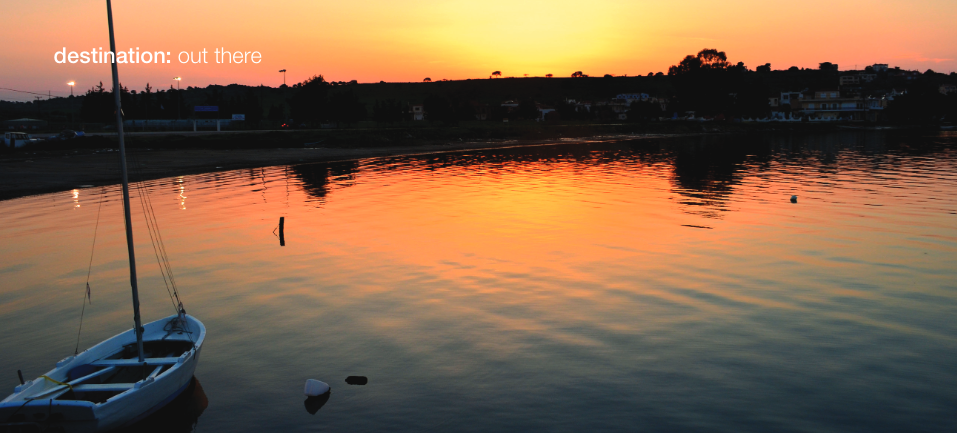If you don’t want your long-term cruising dream to remain a dream, Dini Martinez outlines a few steps that might help cut your dock lines.
A family of four, two children under three, a husband who has barely done any sailing. Neither of us being a sail maker, boat builder, carpenter, engineer or even particularly handy.
In brief, we didn’t possess the best prerequisites for packing up and going cruising. What we had however is a strong commitment to explore voyaging as a way of life, an urge to become self-sufficient citizens of the sea and the courage to cut the lines.
If you have been thinking about extended cruising, then there probably has never been a better time to start your journey than right now.
“If you want to build a ship, don’t drum up people to collect wood and don’t assign them tasks and work, but rather teach them to long for the endless immensity of the sea.” – Antoine de Saint-Exupery.
The question of where to start can be quite daunting, especially from the perspective of one’s comfortable lounge chair. Beth Leonard’s Voyager’s Handbook states the foundation first: you cannot do without a crew, some money and a boat. “An enthusiastic crew and a strong, solid boat can make up for a serious shortfall in money. And sufficient money and enthusiasm can overcome most shortcomings in the boat. But a luxurious boat and lots of money won’t transform a sullen, reluctant crewmember into an eager, committed one.”
What makes a successful crew
Having a sincere think about whom you would like to go cruising with – and who would like and is able to go cruising with you – is a good place to start.
If you are not in a relationship or family constellation that lends itself to longer-term cruising, can you entertain the thought of going solo? If none of the above, start recruiting. This process might take some time and many shapes and forms, from convincing your partner by highlighting the aspects of sailing s/he enjoys, over discussing crewing possibilities with suitable friends, to surfing the net.
Becoming a member of a cruising association such as the Ocean Cruising Club (OCC), Seven Seas Sailing Association (SSCA), Moody Owners Association (MOA) or relevant Facebook groups can also connect you with interested crew.Once your crew is sorted, finances come next. These will determine how much boat you can afford and when you can realistically aim to cut off your lines.
Adequate financing
The answer to cruising costs filters down to what standards you have in mind.
An average dollar estimate is of little use as the variety of boats, budgets and cruising lifestyles is immense. This is effectively described by Leonard in the following three hypothetical examples, which very well reflect our own observations and experiences.
Simplicity, a 30 foot boat from the 70s, accommodates a young, pre-career couple with great stamina but little financial means. Before departing, lots of DIY made the boat seaworthy. While cruising, any luxuries like marinas, laundry automats, eating out, buying souvenirs or the latest navigation gadgets are no option. With no insurance unless legally required, Simplicity’s approximate costs included $30,000 for the boat and refit, with an annual budget of $15,000 for living expenses and boat maintenance.
Moderation’s crew has saved up during ten plus years of career and investments and might have a child or two. They settled for a medium range, safe, second-hand boat from a well-known blue-water brand, taking resale value into account. Marinas are visited occasionally during a sabbatical sailing year or a new way of life which might see them work along the way. Health insurance is kept to basics, but a reputable full-hull insurance is taken up as the boat represents substantive amounts of their savings. This category has spent between $100,000 and $200,000 on the boat and getting it ready and lives on an approximate annual budget of $20,000-$30,000.
Highlife is the newest production catamaran with all the latest gadgets, including an onboard washing machine, SSB and satellite and mostly electronic sailing equipment. The retired crew can live comfortably from their pension and rental incomes as long as their health stays in good shape. They have taken up the most inclusive health insurance and Lloyd’s of London provides full coverage at around two per cent of hull value. The estimated annual budget lies around $60,000 and includes marina stays in most locations, eating out almost daily and travelling home at least once a year to visit the grand-children.
Overall, it is very easy to over-spend during the boat purchasing and preparation stage and not have enough left to go cruising in the end. The latter does not only include living expenses, but also an average ten to twenty per cent of boat value on yearly maintenance.
Before we set off, our budgeted target included 40 per cent for the boat and any required upgrades, a further 40% for several years of cruising and the remaining 20 per cent as an emergency buffer.
Finding your blue-water yacht
This could be an article in itself and might be irrelevant for those who already have an adequate yacht.For the latter, be wary and take a step back before you convince yourself that just because you have owned your coastal production cruiser for many years and know her well, she is also the boat that will sail you safely across oceans.
Centre or aft cockpit; sloop, ketch or catamaran; GRP, steel or other; comfort and functionality; must-haves and nice-to-haves and safety features important for your planned trip are just a few of the points to consider. For us, buying a model which listed frequently on ARC participations and the like, such as Hallberg-Rassy, Oyster, Najad, Sparkman Stephens or Moody, was part of our safety plan. We were prepared to pay extra for a brand name as we did not deem ourselves experienced enough to judge a no-namer on its ability to cross an ocean safely. Moreover, the lack of information and support inherent in custom builds were deal breakers for boats like a well-maintained US built Cape Dory we viewed near Alicante, Spain.
In hindsight, the premium paid has proven well worth it as the support and assistance we have received from the very active Moody Owner’s Association has been invaluable. Remains to say that if you don’t own a boat yet, regularly visiting boat shows in your vicinity, spending your weekends viewing a large variety of potential boats, talking to other cruisers and scrolling through all the information in books and on the net are all great ways to help you narrow your search criteria and find out which make, model and boat is for you.

Deciding when to go
Once the crew, the finances and the yacht or refit are established, an approximate timeline with specific milestones, including a departure day, will help keep and bring your dream alive. Understanding global wind and weather patterns, as for instance explained in Jimmy Cornell’s World Cruising Routes, is fundamental in this process.
We wanted to start in the Med, partially due to the reduced likelihood of extreme weather. We also did not have a strict timeline to adhere to as we always regarded working along the way as part of our adventure.The month our savings account reached the budgeted target happened to coincide with the birth of our second child and the granting of my husband’s Australian citizenship. It was like graduating all over again.We had waited so long for this moment and all of a sudden it was all there, together with the scary fact that we no longer had any excuses not to go.
Within two months we turned our settled lives around, gave up our house and jobs, said our farewells and flew to Europe to find our yacht. With only a few backpacks of luggage allowance, we certainly weren’t at risk over over-loading our future boat.
Getting ready
After six months of visiting countless European ports and another six months of topping up the kitty in the UK, we finally moved on board. During a three-day contractually agreed hand-over, the prior owner ran us through every system, nut and bolt. Thanks to a detailed prepurchase survey we had no nasty surprises. Our to-do list consisted of minor upgrades and repairs and attacking it felt like a necessary ritual to get us and the old lady ready for cruising. Nevertheless, the list grew longer every day and at times, seemed quite daunting.
Our questions included: what EPIRB to get; which tools are essential; what is the best value navigational instrument combo that is also safe and reliable; which antifoul to use; where best to mount the SSB antenna; or should we just go with a satellite phone; do mast-steps cause more risks or benefits; shall we replace the through-hulls just in case; or trust the survey report which briefly mentions that they are in an ok state; is a complete service of the engine necessary after ten years of no major work; or can we give it a try based on its good looks, reassuring sounds and heads-up by the vendor?
All of a sudden, the ‘refit’ and ‘getting ready to go’ chapters of our cruising books became so much more interesting and relevant. More often than not, the problem was not finding answers, but rather not getting side-tracked or overwhelmed by the vast amount of information out there.
Sticking to essentials
Most cruisers seem to leave with too much stuff. The five-headed family on Totem, who have been cruising the world for almost seven years, agree: “Sticking to essentials is part of how we’ve been able to go cruising in the first place instead of staying stuck at the dock.” Delving into memories of Joshua Slocum, Bernard Moitessier or Jacques-Yves Cousteau, it quickly becomes clear that the essence of cruising does not lie in the latest gadget. Living proof are Lin and Larry Pardey, sailing icons and CH contributors. They have cruised together for more than 200,000 nautical miles, mainly on vessels under 30 feet with no engine, circumnavigating the globe both ways.

Connecting with the cruising community
Another crucial point in getting out there is connecting with like-minded people. Many landlubbers appear to be too confronted by the mere thought of saying “yes” to adventure as a way of life. Some might not even understand what it means to have a dream, let alone the requirements to make a dream come true.
In contrast, most long-term sailors have an insatiable thirst for adventure, a good dose of idealism, a way to embrace simplicity and the ability to slow down for things, moments and relationships important in their lives. Generally there is a sense of camaraderie, helping those trying to make the change to life on the oceans. After buying our Moody 425 the first thing we did was join the MOA.
At our first luncheon we met a bunch of friendly sailors, including one who happens to own the same boat in the same yard as us. Needless to say he, with over ten years of cruising experience under his keel, became our new best friend. Moreover, the members’ state-of-the art technical online library counts over 50,000 posts on a huge variety of cruising related topics, all sorted by type of issue and boat model. Amongst others, this has provided us with the exact measurements for a tailored holding tank for Happy Dancer’s model and make, saving us from having to unscrew the whole bathroom cabinet, measure out the awkward angles and build a carton model ourselves. Precious!

Whilst not every brand has such a strong community behind it, it is worthwhile checking what information is out there about the make of boat you are hoping to purchase or already own. The OCC seems to be equally active, having set us up with several mentors who are, or have been, on the same route as us. Its website also provided excellent information, including a detailed forum for members on weather, navigation, places and many other cruising related topics.
Beyond the structured organisations and blogs, Facebook groups have also been an excellent way to connect with cruisers on the same wavelength. Whether you are a retired couple, solo voyager or a young family like us, chances are that there are people just like you out there who are already doing what you are aiming to do and from whose mistakes you can potentially learn.
Appropriate skills
Blue-water cruisers’ initial skill sets are as varied as colours in a rainbow. What we all seem to have in common is a gigantic learning curve at the beginning, openness to try new things and eagerness to become more self-sufficient.
Skills can all be learnt and acquired, the courage to cut the lines cannot. Bad weather being the greatest fear of many wanna-be cruisers, you can start right now to better comprehend and manage it by having a look out of the window and studying a relevant synoptic chart. Make this part of your daily routine and soon it won’t seem so scary anymore as your understanding and awareness continues to grow.
“Even a journey of a thousand miles begins with one small step.” – Laozi, Tao Te Ching.
Be prepared for surprises
More often than not, the difficulties you feared most turn out to be minor nuisances at most, whereas aspects you haven’t even thought about turn out to be rather unexpected challenges. For us, like for many cruising families, the kids’ safety and happiness were a major concern before leaving.
Turns out that with their safety harness now an almost constant extension of themselves, in their natural flexibility, every day is an adventure. Beach mornings, swimming lessons, local playgrounds, little excursions, fishing with daddy, building Lego boats, arts and crafts, reading books or bonding with other boat kids keeps both our one and three year old very happy and entertained.

What has been hardest for us links back to the very first point: choosing the right crew.No matter how much we love each other’s company, being together 24/7 can bring everyone to the limits of family love. It has been crucial to find a new rhythm which allows for ‘me-time’, ‘couple-time’, ‘family time’, ‘work time’ and ‘free time’ alike. Nigel Calder, renowned marine author, onboard system specialist and family cruiser also emphasises that couples must be willing to work together to find a style of cruising that suits both partners.
Finding your way
One of the challenges and joys of cruising is that there is no right or wrong way, there’s just your way. A good dose of guts and gut feel is the main thing you need to sail, one mile at a time. Then test, see, re-evaluate and when necessary, improve, upgrade or acquire additional gear and even the biggest journey won’t seem too intimidating. Just as there is no perfect boat, crew or timing you simply make it the best boat for your voyage and embrace your crew as the most suitable for your adventure.
A vast quantity of boats we saw were for sale because the owner had serious health issues or died before ever being able to realise his or her cruising dream. This reinforced to us over and over again that the best time to start cruising is now.
Mother and skipper Dini gave up settled life in Sydney in July 2013 and moved onboard the Moody 425 Happy Dancer with husband and two little boys. Updates on their journey can be found on yogicsailingfamily.wordpress.com.
























